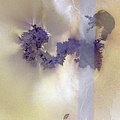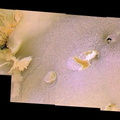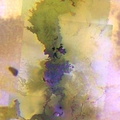
WIKIARCHIVES.SPACE
The Human Spaceflight Archive

Prometheus is the "Old Faithful" of the many active volcanoes on Jupiter's moon Io. A broad, umbrella-shaped plume of gas and dust has been spotted above Prometheus by NASA's Voyager and Galileo spacecraft every time the viewing conditions have been favorable. The volcano is surrounded by a prominent circular ring of bright sulfur dioxide apparently deposited by the plume. However, the origin of Prometheus' plume is a long-standing mystery: Where is the vent that is the source of all the gas and dust?
Information
- Taken in
- Author
- NASA/JPL/University of Arizona
- Description
-
Prometheus is the "Old Faithful" of the many active volcanoes on Jupiter's moon Io. A broad, umbrella-shaped plume of gas and dust has been spotted above Prometheus by NASA's Voyager and Galileo spacecraft every time the viewing conditions have been favorable. The volcano is surrounded by a prominent circular ring of bright sulfur dioxide apparently deposited by the plume. However, the origin of Prometheus' plume is a long-standing mystery: Where is the vent that is the source of all the gas and dust?
Some clues are offered by this false-color picture with a resolution of 170 meters (186 yards) per picture element, which was taken by Galileo on February 22, 2000. To the right is a dark, semi-circular, lava-filled caldera. South of it lies a fissure from which dark lava has flowed toward the west (left). The lava flow extends 90 kilometers (54 miles) from the source. Bright patches probably composed of sulfur dioxide can be seen in several places along the flow's margins. Two of these patches (near the top left edge of the dark lava, at the farthest reaches of the flow) display faint blue hazes, apparently produced by airborne dust entrained within plumes. Both of these spots are locations of newly erupted lava that has encroached on the surrounding plains since Galileo last imaged the region in October 1999. Galileo scientists are now studying whether heating of the volatile, sulfur dioxide-rich plains by encroaching hot lava might account for the persistent plume activity observed near Prometheus.
- Created on
- Thursday 26 October 2000
- Albums
- US SPACE PROGRAM / PROBES / JUPITER / GALILEO / Mission Photos (Edited) / JUPITER / IO
- Source link
- https://photojournal.jpl.nasa.gov
- Visits
- 11
- Rating score
- no rate
- Rate this photo
- License
- Public Domain
- Modified by WikiArchives
- No (original)
- Downloads
- 0
Powered by Piwigo




